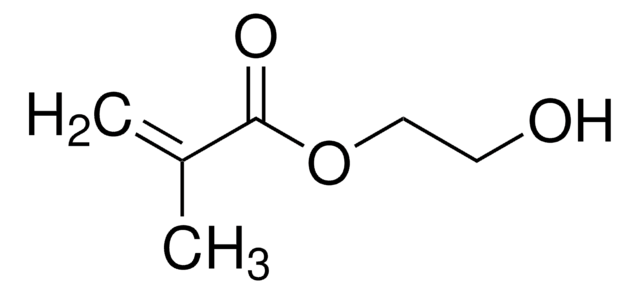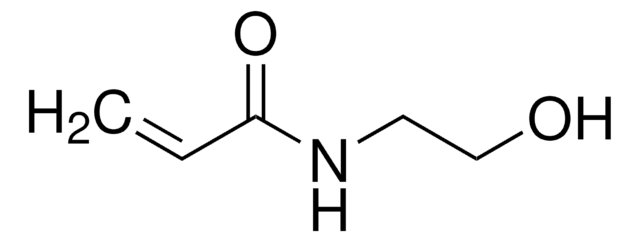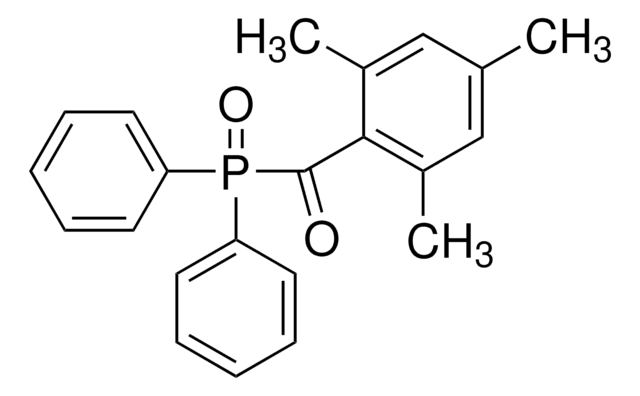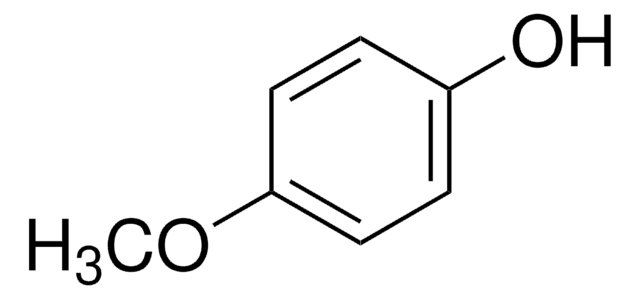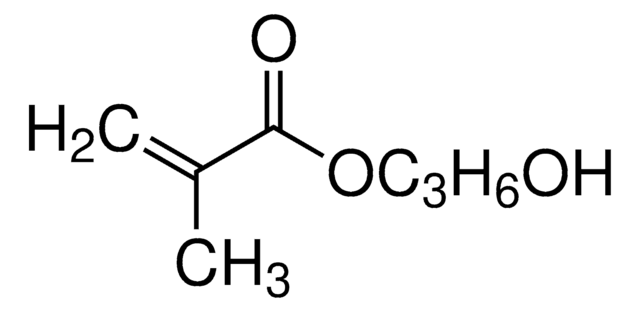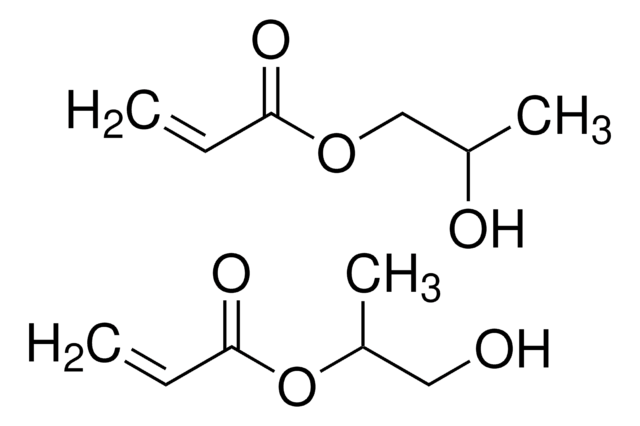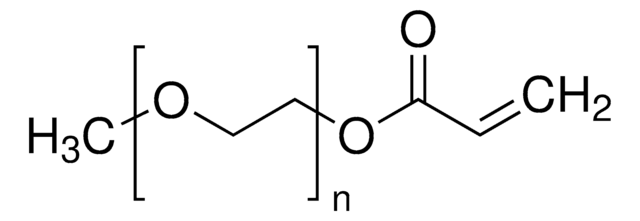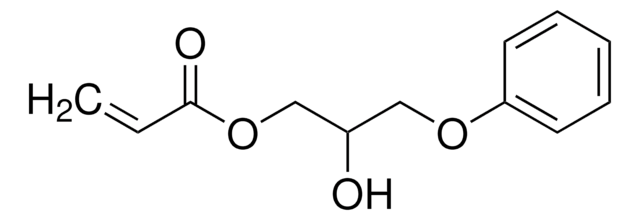推荐产品
蒸汽密度
>1 (vs air)
蒸汽壓力
<0.1 mmHg ( 20 °C)
化驗
96%
形狀
solid
包含
200-650 ppm monomethyl ether hydroquinone as inhibitor
折射率
n20/D 1.45 (lit.)
bp
90-92 °C/12 mmHg (lit.)
密度
1.011 g/mL at 25 °C (lit.)
儲存溫度
2-8°C
SMILES 字串
OCCOC(=O)C=C
InChI
1S/C5H8O3/c1-2-5(7)8-4-3-6/h2,6H,1,3-4H2
InChI 密鑰
OMIGHNLMNHATMP-UHFFFAOYSA-N
正在寻找类似产品? 访问 产品对比指南
一般說明
應用
訊號詞
Danger
危險分類
Acute Tox. 3 Dermal - Acute Tox. 4 Oral - Aquatic Acute 1 - Aquatic Chronic 3 - Eye Dam. 1 - Skin Corr. 1B - Skin Sens. 1
儲存類別代碼
6.1A - Combustible acute toxic Cat. 1 and 2 / very toxic hazardous materials
水污染物質分類(WGK)
WGK 3
閃點(°F)
213.8 °F - closed cup
閃點(°C)
101 °C - closed cup
個人防護裝備
Faceshields, Gloves, Goggles, type ABEK (EN14387) respirator filter
其他客户在看
商品
The manufacture of monomers for use in ophthalmic applications is driven by the need for higher purity, improved reliability of manufacturing supply, but ultimately by the need for the increased comfort, convenience, and safety of contact lens wearers. Daily wear contact lenses have the potential to fill this need for many customers; however, their widespread use is constrained by higher costs compared to weekly- or monthly-based lenses. New approaches that improve cost structure and result in higher quality raw materials are needed to help make contact lenses more affordable and accelerate growth of the contact lens market.
我们的科学家团队拥有各种研究领域经验,包括生命科学、材料科学、化学合成、色谱、分析及许多其他领域.
联系技术服务部门